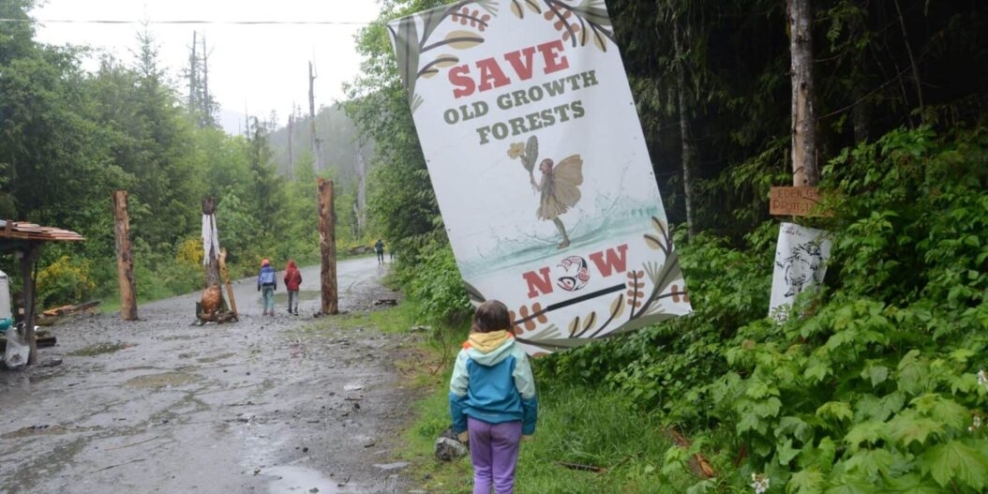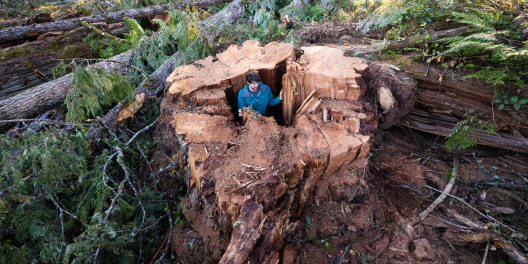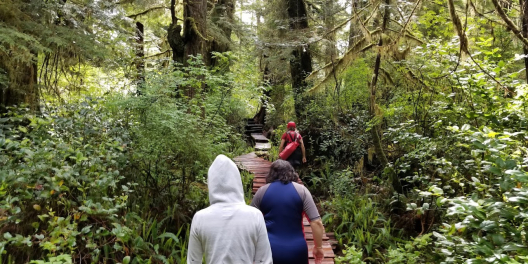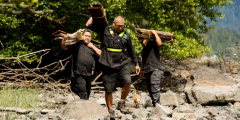Logging companies say they need another decade of old-growth logging to survive, but many industry observers aren’t buying it.
According to Garry Merkel, a Registered Professional Forester who co-authored last year’s strategic review of old-growth with fellow forester Al Gorley, the industry told them that most second growth is still too small to harvest.
Until then, logging companies plan to rely on old-growth logging, Merkel said in a Victoria Times Colonist story.
Merkel and Gorley’s report calls for a paradigm shift in the way BC manages its old-growth forests, of which less than one percent of the highly productive old-growth, growing large tree remains. They recommend BC’s forests be managed for ecosystem health, not for timber.
In an interview with The Narwahl, Merkel commented on recent arrests of land defenders and the public’s view of dwindling old-growth. He said, “There is certainly a perception out there in the public that we have so little old-growth left that we need to protect what’s left. And I can appreciate why people would have that.”
Logging companies maintain they need 10 to 20 years to phase out dependency on old-growth, but Torrance Coste, national campaign director for the Wilderness Committee, disagrees. He blames companies for logging much too quickly. He rejects the notion that nothing can be done to eliminate the logging industry’s dependency on old-growth trees and adds that BC doesn’t have a decade to spare if it wants to preserve remaining old-growth biodiversity.
“We’re not quite ready to make the shift? Let’s make ourselves ready,” he said. “We can intervene in economic and … policy measures. We can’t intervene in terms of what ecosystems need.”
Coste believes the BC government needs to go beyond logging deferrals and put in place outright bans on logging at-risk old-growth.
However, the industry is reluctant to ween itself off old-growth trees, despite growing concern about forest ecosystem health. According to Susan Yurkovich, president and CEO of the B.C. Council of Forest Industries, old-growth still makes up about a quarter of all harvesting in the province.
“It’s stuff that you see, not generally stuff that’s structural,” she said. “So the shakes and shingles on your house. You could have a cedar roof, you walk in and you see a beautiful kind of wood-panelled wall.”
Change is coming to the forest sector; the question is how and when will it happen?
John Horgan’s NDP government has so far been long words and short on action, as the conflict in Fairy Creek brings international attention to BC’s logging record.
Garry Merkel says it’s taken longer than expected for the government to start implementing their report’s 14 recommendations. He admits it’s a big undertaking, but a necessary one.
“This is going to the core of who we are as British Columbians. We built British Columbia on the backs of the timber industry. And we will always have a forest processing sector. But we’re working toward completely restructuring that sector. So, it’s going to be a big change,” Merkel told the Times Colonist. “It’s just the transition of how you get from here to there that is the difficult part.”










